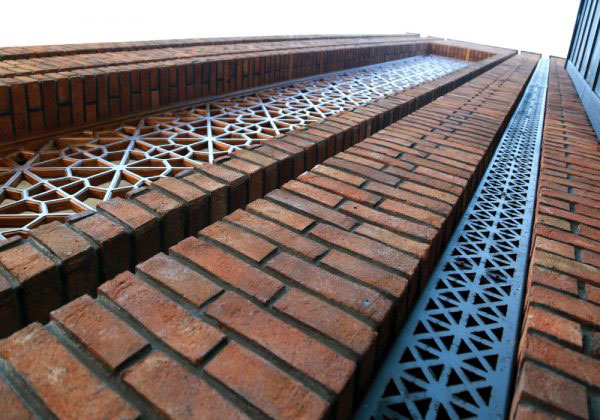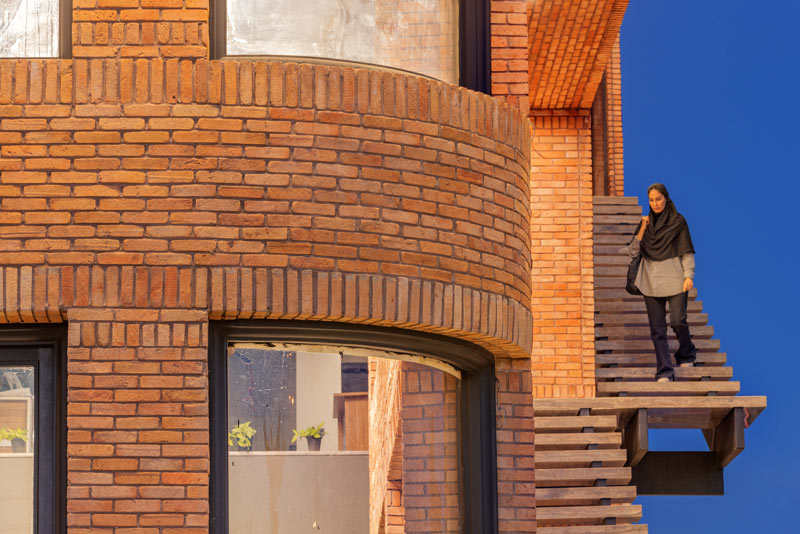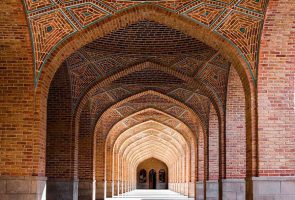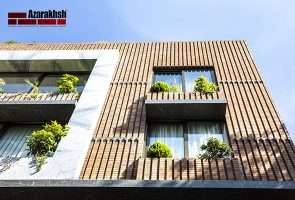The benefit of brick facade on reducing energy consumption

Maybe relating bricks to energy consumption is a bit complicated and requires thinking more but it is an undeniable fact that brick facades have a significant role in reducing energy consumption in buildings. But really what factors shaped this influence?
Stay with us to review these items.
For years, in the discussions related to energy and this category of issues, the bold role of brick as an effective material in this field can be seen. Because the use of brick has undeniable effects on reducing energy consumption and has attracted many opinions in this regard. For this purpose, to get acquainted with this effective role, we will start with an introduction to energy consumption and continue with the role of façade brick.
Azarakhsh, a well-known brand in the construction industry, due to put into operation the 4th line of the plant, is tied to the refractory brick facade.

One of the main concerns of humans today is facing the lack of energy reserves and excessive consumption. For this reason, various methods have been used to reduce energy consumption and optimize it.
Unfortunately, Iran ranks first in energy consumption in the world. Therefore, paying attention to this issue has a special place in our country, and in various industries, especially the construction industry, observing and applying the principles of optimizing energy consumption is one of the fundamental taking action.
The role of the construction industry in the consumption of energy reserves
Building construction methods appropriate for more than one-third of energy consumption in any country. For this reason, in the advanced countries of the world, low-consumption, green, and sustainable buildings have been exposed to attention.
The amount of energy consumed by buildings in Iran is about 5 to 6 times more than the international standards, which includes approximately 40% of the total energy consumption in the country. This rate is very high compared to other industries.
Unfortunately, for many years in the construction industry in our country, careful considerations were not made regarding the crisis of lack of energy reserves, and no attention was paid to the reduction of energy consumption in buildings. If this energy loss continued at the same speed, in addition to fueling the crisis of energy shortage in the world, it would also lead to the aggravation of environmental pollution.

But the good news is that in recent years, significant mechanisms have taken place to overcome this crisis and effective action has been taken to correct it. The use of materials such as brick in the facade of buildings is clear proof of this matter.
Article 19 of National Building Regulations with the aim of optimizing energy consumption.
Along with environmental considerations, with the formulation of Article 19 of the National Building Regulations, which took place in 2014, compliance with its principles is mandatory in construction, and due to this topic, more attention was paid to the issue of energy than in the past. Chapter 19 of the National Building Regulations deals with the issue of reducing energy consumption and saving it, and many of the effective actions taken in this regard are due to this topic. In article 19, choosing suitable building materials is one of the most important topics.
In this article, buildings are divided into 4 general categories according to the area in which they are located and in terms of energy saving.
- Buildings with high saving energy consumption.
- Buildings with mid-saving energy consumption.
- Buildings with low-saving energy consumption.
- Buildings without the need to save energy
This amount of energy saving is due to the factors mentioned below:
- The conditions of the building using solar energy
- Type of energy consumption (electrical and non-electrical) to provide heating, cooling and hot water consumption
- The ratio of the surface area of the light-transmitting exterior shell of the building to the surface area of its useful infrastructure
- Using modern ventilation systems
- How to use the building with non-residential use (continuous or intermittent)
The outer and exterior shell of the building, which was mentioned earlier, is a kind of separator between the interior and exterior of the building, which plays an important role in energy consumption.
Here, the most important thing to know is that the outer exterior shell of the building is the most important part of most buildings in terms of energy consumption.
In the past, the outer shell was a barrier between the interior and exterior of the building. But in modern methods, shells are systems that respond appropriately to the external environment and create a pleasant atmosphere inside, thus significantly reducing energy consumption.
The materials effects on energy consumption
The facade of the building is one of the important and influential parameters of energy consumption in the building industry. Because one of the most important parts of a building is its façade.

As stated earlier and according to some experts in the field of energy, buildings are one of the biggest sources of energy loss in the country. Therefore, choosing the right materials for the facade of the building in order to optimize energy consumption is of great importance and its selection should be done correctly.
Materials play a significant role in the absorption of solar energy, and the amount of absorption depends on several characteristics of materials such as material, color, and surface finish (roughness or polish).
Here, brick is examined as one of the environmentally friendly materials and the effects of brick facades.
The role of bricks in optimizing energy consumption
The use of heavy materials such as bricks, concrete and, cement blocks increases the “thermal stability” of the building. If heavy materials are not used, this result will not be achieved, and for this reason, you should avoid using light materials.
But the question that arises here is what does thermal stability mean in façade bricks?
In the simplest language, thermal stability means that if the temperature changes outside the house, the air inside the house does not undergo much change. As is clear, this leads to savings in energy consumption.
Brick is a material that has a low absorption coefficient and for this reason, it has a good thermal performance. Therefore, brick facades play a significant role in optimizing energy consumption.

According to the evidence and statistics obtained, refractory brick slips have the lowest energy consumption among other materials. Therefore, the best materials that can be used in the facade and benefit from its beauty and other valuable features. This is because this type of brick reduces energy loss by 23% due to its low heat absorption up to 4.5%. Also, according to another study in Tehran, this type of brick has the best performance in comparison with the other materials for a 6.9% reduction in energy consumption.
The current policies of the country in order to optimize energy consumption have taken many actions to use effective materials in reducing energy consumption such as “brick“.
Thermal mass or thermal inertia in bricks.
Thermal mass is the ability of the outer shell and inner walls to store energy and give it back. In other words, thermal inertia provides the ability to absorb and store heat. As a result, energy loss is avoided.
Brick with this feature stores a lot of heat and releases it gradually. With this reserve, energy costs decrease and lead to an increase in efficiency.

Selection of façade materials according to the weather
For construction in any climate, a certain type of material must be used to be compatible with the environment and its conditions, and thus lead to a reduction in energy consumption.
In Iran, due to different climates, the selection of materials should be done more carefully. Each city has a lot of potential with its specific climate. By using these potentials, effective action can be taken to reduce energy consumption.
For example, in warm and mild climates, façade materials that reduce solar energy absorption and consequently improve thermal performance are very suitable. Brick is the material that can bring these features to areas with this climate. Another example is that in southern cities, due to excessive heat in the regions, the use of light-colored facades prevents heat absorption.
last word
The effect of brick facades on energy consumption is one of the important topics discussed in this article. Bricks due to the property of thermal mass that was mentioned before would be more proper in comparison with the other façade materials.
Fortunately, today, with the increase of brick facades and the use of less energy-wasting materials, the optimization of energy consumption in the building industry is on the right track. Therefore, Azarakhsh International Group, as the largest producer of façade bricks in the Middle East, is proud to take an effective step in this direction and play an effective role in this way. To communicate with Azarakhsh expert personnel, get advice and get more information, refer to this section and buy bricks that suit your taste and desired area.















Comments
Your feedback is important to us. Please share comments or ask questions you haven’t found the answer to yet.